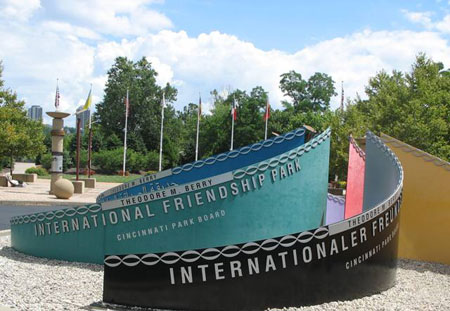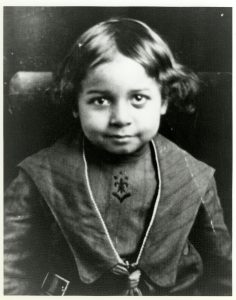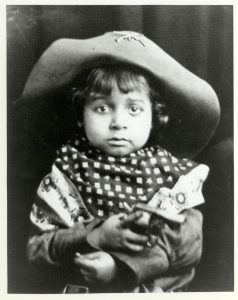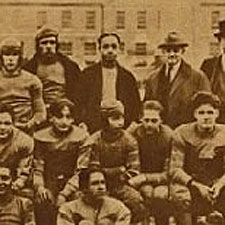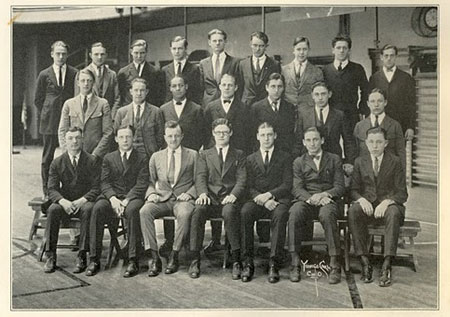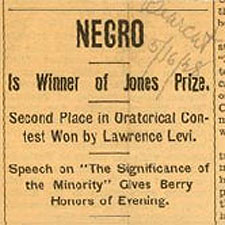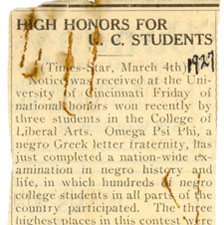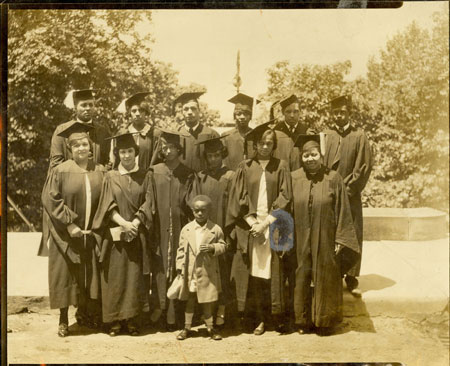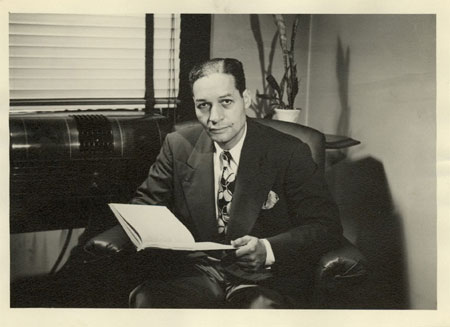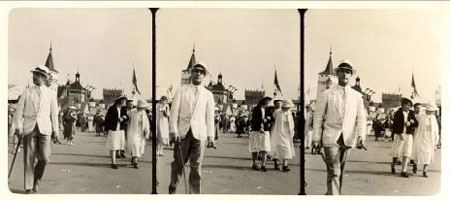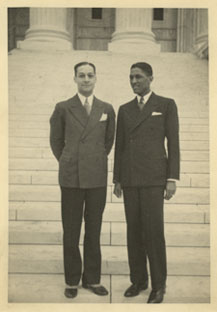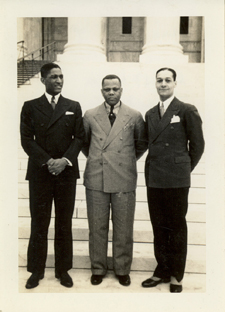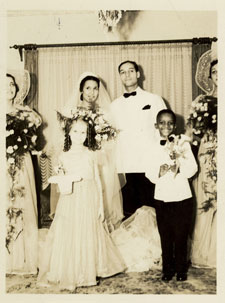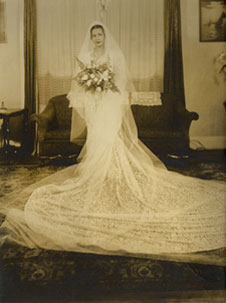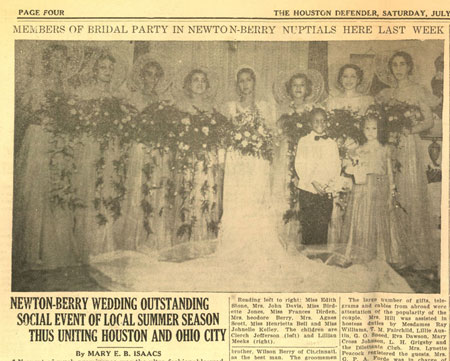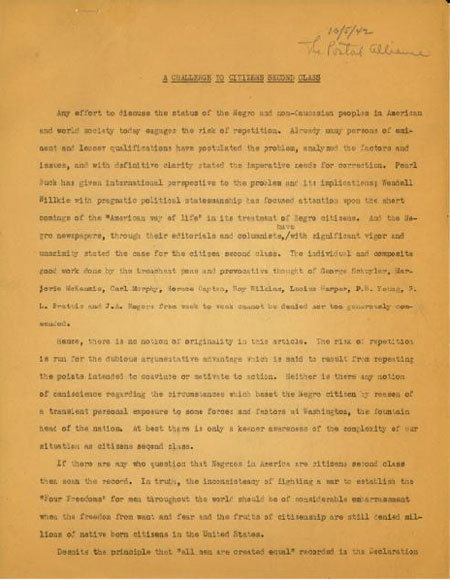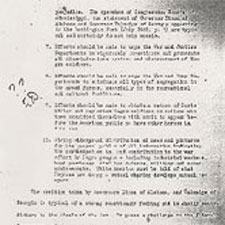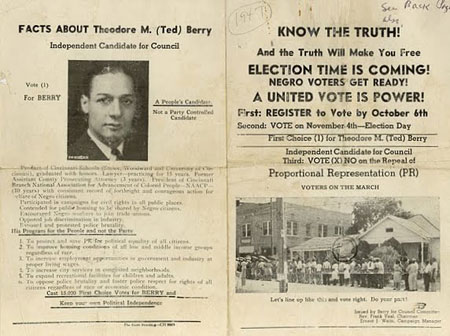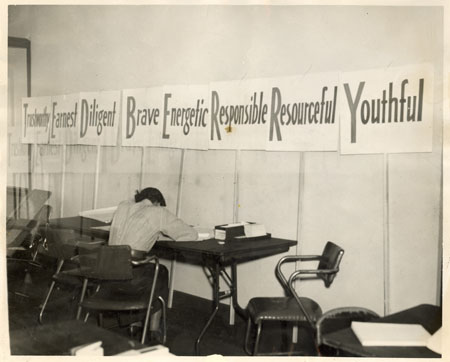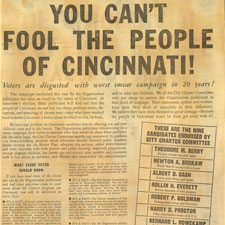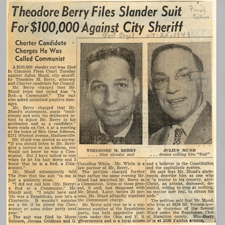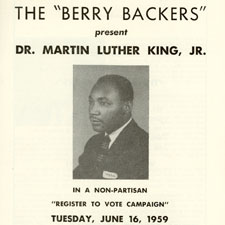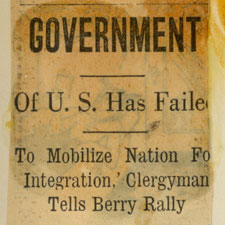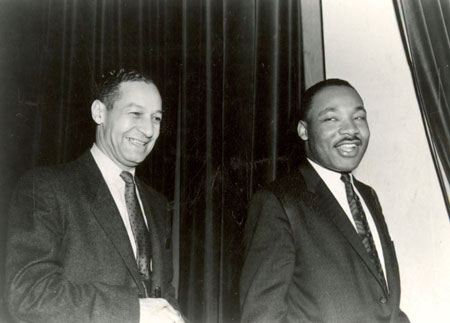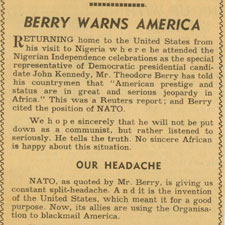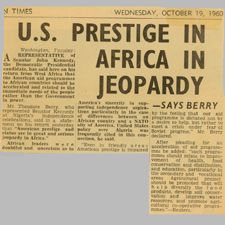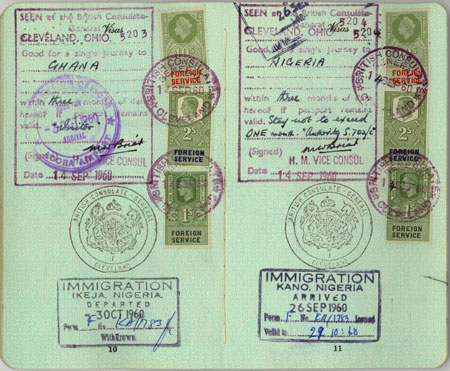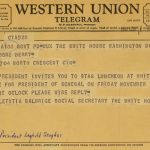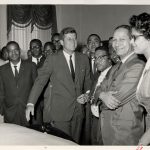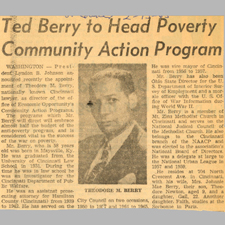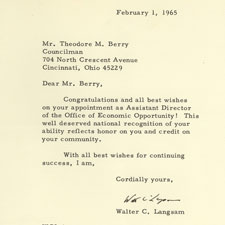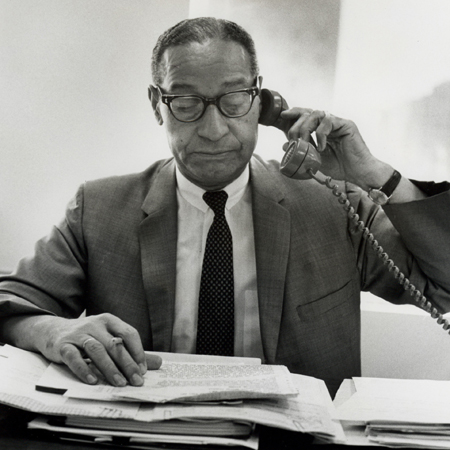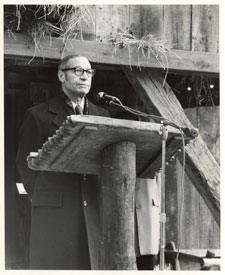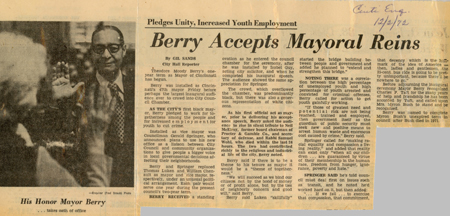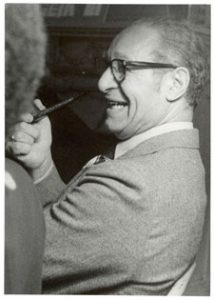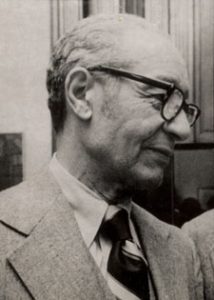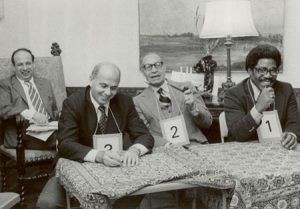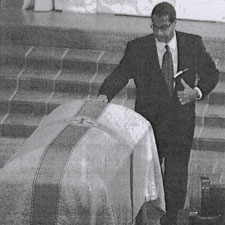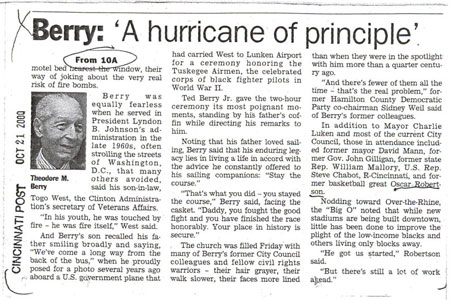November 8, 1905
Theodore M. Berry is born in Maysville, Kentucky. His mother is a laundress and is deaf and mute. Although she does not know any official form of sign language, she is able to communicate with others via an improvised system of signals of her own making. She, young Theodore and the rest of the family move to Cincinnati, Ohio when he is still very young.
1914
Young Theodore is enrolled in the Harriet Beecher Stowe School for underprivileged migrant African American children. His principal at the school is Jennie D. Porter, who in 1928 became the first African American woman to earn a PhD. at the University of Cincinnati.

1915 Class Photo, Berry is in the front row on the far left 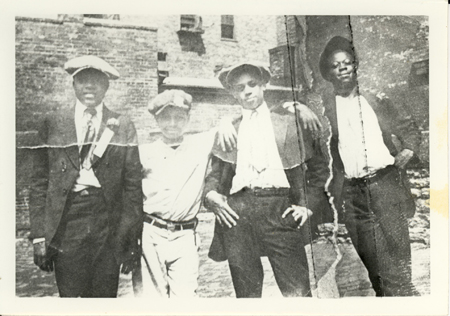
Berry (second from left) with some young friends
1924
Berry becomes the first African American Valedictorian at Woodward High School when he submits his winning essay “The Chaos Beyond” under the pseudonym “Thomas Fairplay.”
Here he is pictured (middle row third from left and back row third from right) in two photos with his teammates on the Woodward High School football team in his senior year along with his letter from the team.
See the archivist’s blog post, Remembrances for more on Berry’s Graduation from Woodward High.
1924-1928
Berry entered the University of Cincinnati immediately after graduating from Woodward High School and worked his way through college as an iron worker at Newport Rolling Mill, a waiter for a railroad company and a kitchen hand at Fort Scott Camp for Boys during the summer months and as a page at the Public Library of Cincinnati during school terms. Berry is pictured at right with the Steel brothers who worked with Berry as cooks at Fort Scott Camp.
While earning his BA, Berry won first place in a national examination of Black History given by Omega Psi Phi and the Jones Oratorical Prize. Though Berry was the only African American contestant for the Jones Prize, he won by unanimous decision after delivering his speech “The Significance of the Minority.”
At right, Berry is pictured with his fellow University of Cincinnati graduates in 1928.
See the archivist’s blog post, The UC Connection for more information on Berry’s time and legacy at the University.
1928-1931
Berry, the only African American in his class, joins University of Cincinnati College of Law and earns his Bachelor of Laws in 1931. Berry is pictured here (number “23”) with his graduating class.
See the archivist’s blog post, The UC Connection for more information on Berry’s time and lasting legacy at the University of Cincinnati.
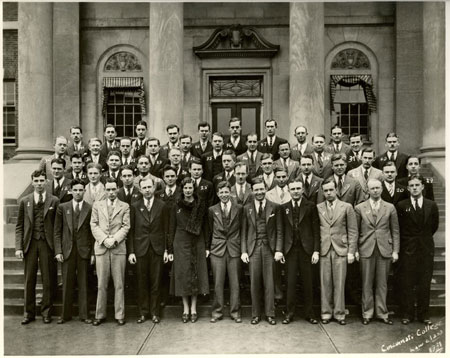
Berry’s graduating class from the UC College of Law
January 1932
Berry is admitted to the Ohio Supreme Court Bar.
“I started in the middle of the depression. I was a poor man’s lawyer.” – Theodore Berry
1932-1938
Berry serves as President of the Cincinnati Chapter of the NAACP. He is the youngest President in the chapter’s history to date.
Berry took a little time off from his duties at the NAACP and his private law practice to attend the Chicago World’s Fair in August of 1934.
March 1937
Attorneys Theodore Berry, Belford V. Lawson and Thurman Dodson are admitted to practice law in the United States Supreme Court.
June 23, 1938
Theodore marries Houston, Texas beauty, Johnnie Mae Elaine Newton.
The wedding and Johnnie Mae’s Chantilly lace gown made the Society pages of many Houston newspapers.
1939
Berry is appointed as Assistant Prosecutor of Hamilton County. He is the first African American to hold the post.
February – August 1942
Berry serves as Morale Officer in the Office of War Information helping to raise support for the war among the African-American populace. He resigns shortly after beginning his service when it is made clear to him that the well-being of black soldiers is not a priority to the Federal Government. In his October 1942 article, A Challenge to Citizens Second Class, Berry makes clear his thoughts on the federal government’s exclusionist policies and its delusive attempts at racial integration. “In recognition of their second class status, during the past ten years, the Federal Government has employed special agents know variously as racial relations advisors and specialists. These positions are in substitute for positions of merit and responsibility in the general affairs of government heretofore occupied by Negroes prior to World War I and the Wilson Administration. They are compromise sinecures and in the nature of the case are second class—they compromise the Negro in his efforts and desire to share and serve his government and they compromise the incumbents of the position.”
See the archivist’s blog post, A Few Words for Sarge: and Berry’s WWII Service for more information.
1943-1946
Berry serves his second term as President of the Cincinnati Chapter of the NAACP.
1945
At the urging of Thurgood Marshall, Berry acts as lead defense attorney for the Tuskegee Airmen, a group of African American pilots from the 332nd Fighter Group and 447th Bombardment Group who had been court-martialed because of their actions during the Freeman Field Mutiny. Three men were accused of having shoved a white Lieutenant and were arrested along with 101 other African American officers who refused to sign a document acknowledging their acceptance of Base Regulation 85-2, an order which would officially prohibit African American officers from the club. The 101 were eventually released with administrative reprimands. Two of the men accused of shoving, Second Lieutenants Marsden A. Thompson and Shirley R. Clinton were acquitted during the 1945 trial and the third, Lieutenant Roger Terry was pardoned in 1995.
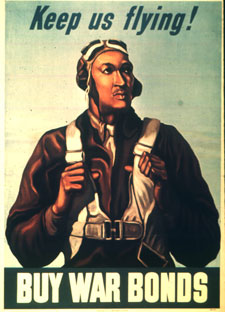
A poster featuring a Tuskegee Airman (digitization courtesy of US NARA, ARC ID 514823); 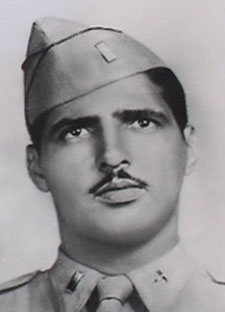
Lieutenant Roger Terry in uniform (photo from the personal collection of Roger Terry) 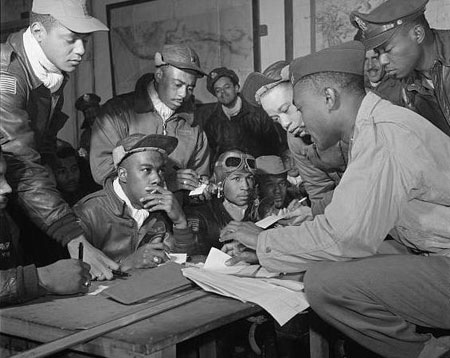
The 101 officers from the 477th Bombardment Group who refused to sign (photo courtesy of the Library of Congress PPOC)
1946-1965
Berry serves on the National Board of Directors of the NAACP
1947
Berry debuts on the local political scene as an independent under the slogan “A People’s Candidate,” when he runs for Cincinnati City Council. The campaign is unsuccessful.
1949
Berry runs for Cincinnati City Council once again. This time, he is backed by the City Charter Committee, a group of democrats, independents and republicans brought together by their common wish to uphold the city charter. The campaign is a rough one and Berry endures much mud-slinging from his, but is victorious in the end. He is one of the first African Americans to be elected to City Council in Cincinnati. His term will run from 1950 through 1951.
See the archivist’s blog post, The 1949 Campaign for more information about the campaign and the “whispering campaign” accusing Berry of Communist sympathies conducted by Berry’s opponents.
1952-1955
Berry is reelected and serves two more terms on City Council. He is pictured here on March 30, 1952, a few months after beginning his second term.
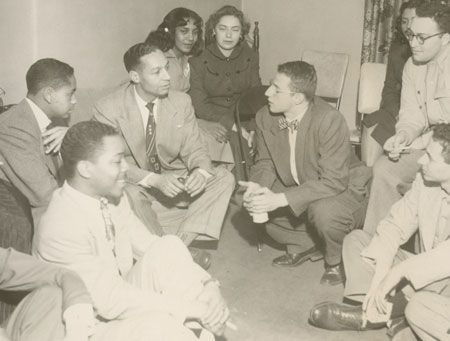
1956-1957
Berry is elected to Council for a fourth term. This time he is appointed Vice Mayor by Mayor Charles Taft.
Vice Mayor Theodore Berry and wife Johnnie Mae are featured on the cover of Jet Magazine’s May 31, 1956 issue along with a four page spread on Berry’s political career in Cincinnati.
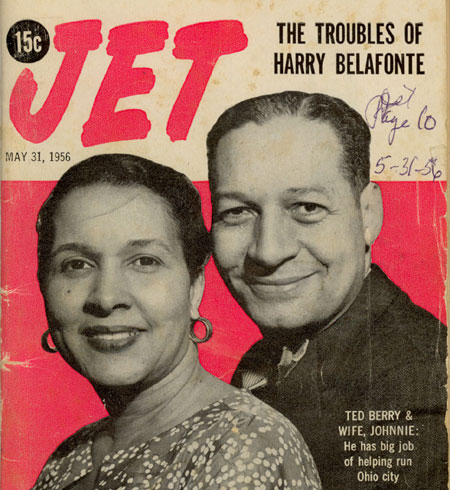
1959
After deciding against running again, Berry was convinced to accept a nomination to the Charter ticket after the “Berry Backers,” a citizens’ group led by Rev. L. V. Booth, presented him with a petition signed by over 5,000 Cincinnatians urging him to run for a fifth term.
Though it was ultimately unsuccessful, the campaign was an exciting one. Berry’s campaign scrapbook includes numerous newspaper clippings, flyers, programs and photographs from various events held to promote his election.
The Berry Backers also arranged a “Register to Vote Campaign” using pamphlets and highly publicized events to encourage people to “do their civic duty.” Dr. Martin Luther King Jr. was the guest speaker at one such event where, after begin introduced by Theodore Berry, he stated that “One of the most significant steps that a Negro can make today is that short walk to the voting booth.”
See the archivist’s blog posts, Hmmm… and Mystery Solved! for information on these items and Berry’s connection with Martin Luther King Jr.
1960
Berry serves as representative for Presidential hopeful, John F. Kennedy when he attends Nigerian Independence celebrations on behalf of the Senator.
Right are articles detailing his findings upon his return to the United States and below are pages from the passport which Berry used on his trip to Africa.
1961-1963
As a member of the NAACP National Board of Directors and a leader in the civil rights movement, Berry is invited to the White House at least three times during John F. Kennedy’s presidency.
Berry’s invitation to the White House for a luncheon in honor of Leopold Senghor, the President of Senegal; President Kennedy greets a delegation of the NAACP.
See the archivist’s blog posts, Hmm… and “Stumble upon” Sleuthing for more information on these items and Berry’s meetings with JFK.
1963
Berry is reelected to Cincinnati City Council and creates the Community Action Commission, a program which would soon be expanded into a federal welfare agency.
1965-1969
Berry leaves City Council when President Lyndon B. Johnson appoints him as the Director of federal Community Action Programs and Assistant Director of the Office of Economic Opportunity under the direction of R. Sargent Shriver.
See the archivists blog posts, An Update on the Theodore M.Berry Project, Mod in the Mountains and Trouble in Anti-Poverty Paradise and All Good Things… for more information about Berry’s time with the Office of Economic Opportunity.
June 13, 1968
Berry is granted the degree of Doctor of Laws, honoris causa by the University of Cincinnati.
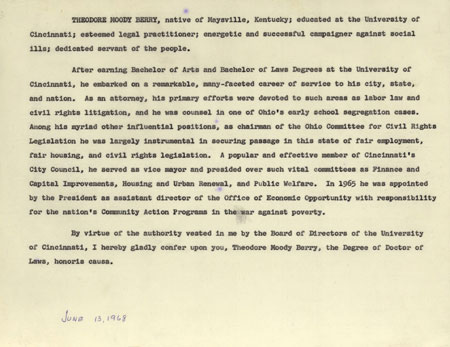
1971
Berry is asked to return to City Council after the death of fellow Charterite, Myron Bush.
December 1, 1972
Berry is sworn in as Mayor, making Cincinnati history as the first African-American to hold the post.
“Today marks the symbolic recognition of the Afro-American Community as a full and responsible partner in the Governance of our city… Thus the city has grown in maturity and civic spirit.” – Theodore M. Berry during his Mayoral acceptance speech (Cincinnati Post, October 19, 2000)
1975
Berry steps down as Mayor of Cincinnati, retiring from political life.
“It has truly been a pleasure and an honor to serve the people of Cincinnati. I am thankful that I am leaving voluntarily, as it should be. This may be my last day of serving the people, but it is not my last day of concern…”
Berry is pictured with Guy Stern, Stan Troup and Ron Temple at a retirement party thrown for him by University of Cincinnati President, Warren Bennis on December 7, 1975.
October 15, 2000
Theodore Moody Berry dies just three weeks shy of his 95th birthday. Over 700 mourners pay their respects and flags at City Hall and on Fountain Square are flown at half-mast in honor of his passing.
See the archivist’s blog post Remembrances for more information on services and memorials in Theodore M. Berry’s honor.
May 17, 2003
Theodore M. Berry International Friendship Park officially opens. The park was designed by Human Nature Inc. and is a total of twenty-two acres stretching along the Ohio river in the downtown area. It features internationally themed gardens, sculpture from around the world, biking and walking paths and a “story telling circle.”
Image from 365Cincinnati.com
